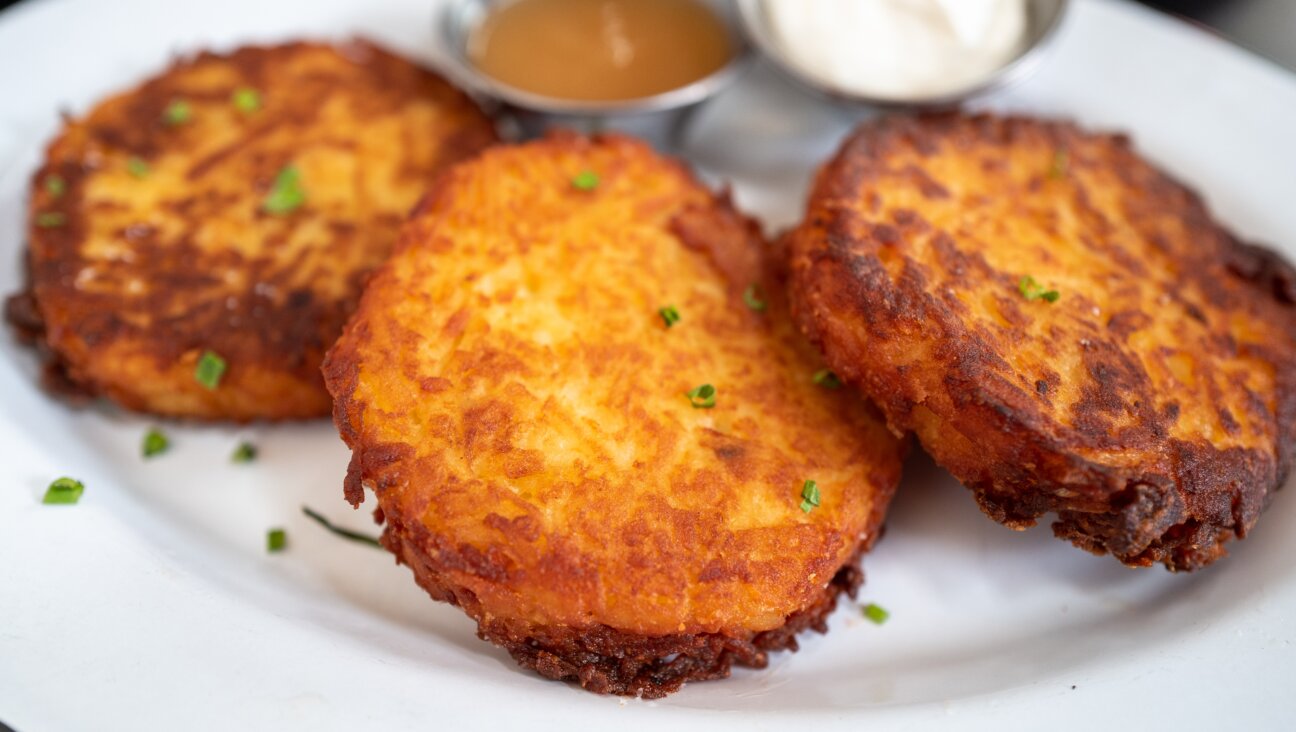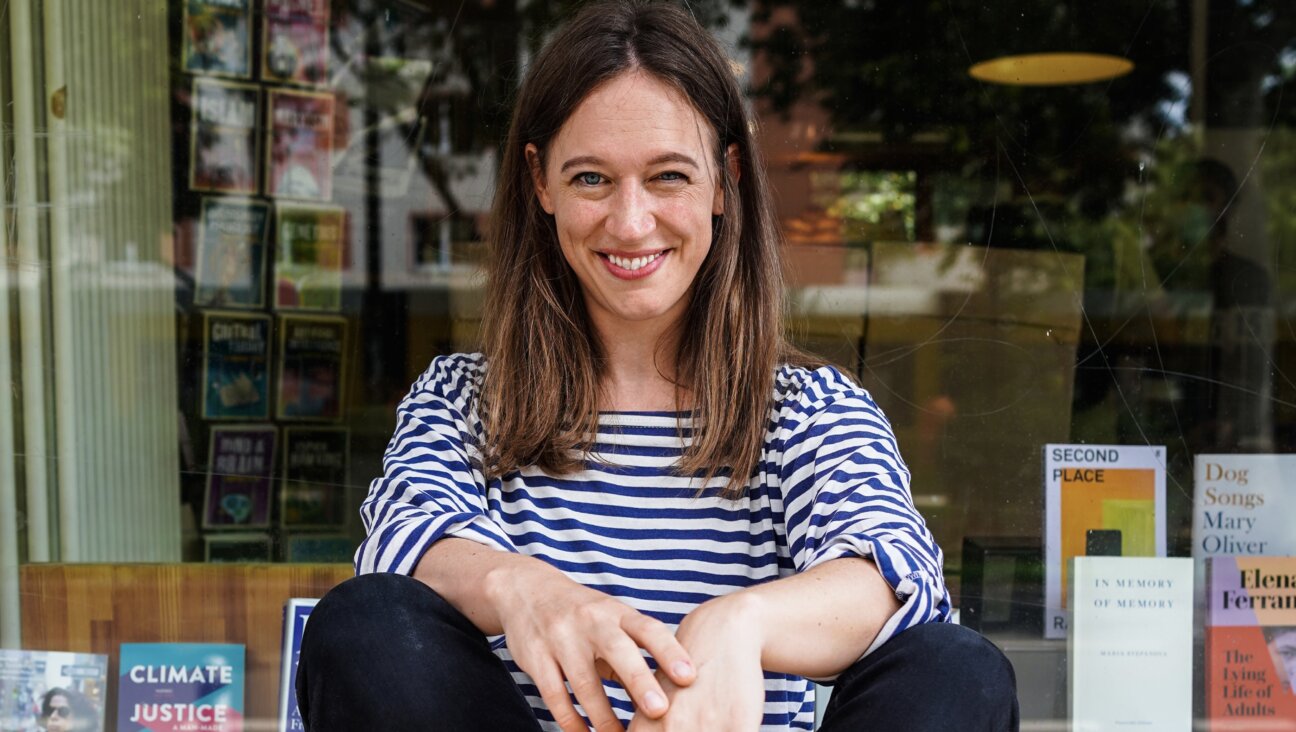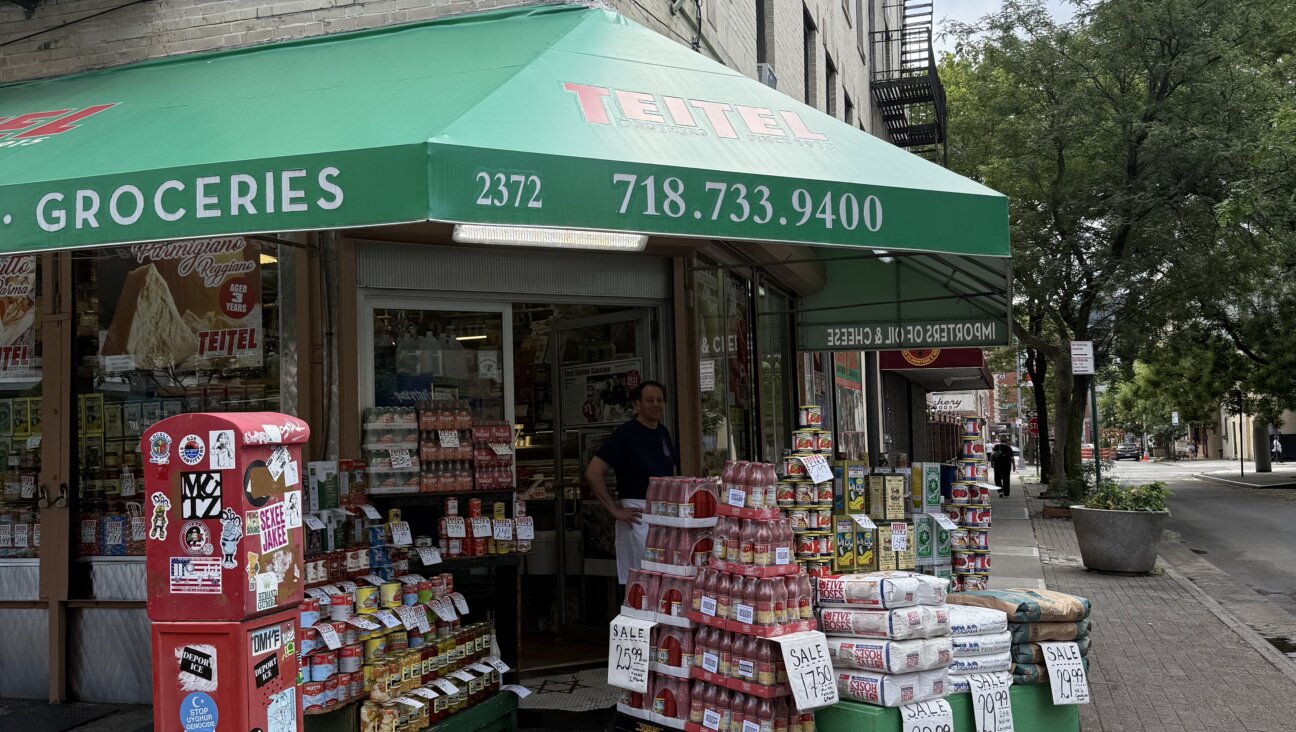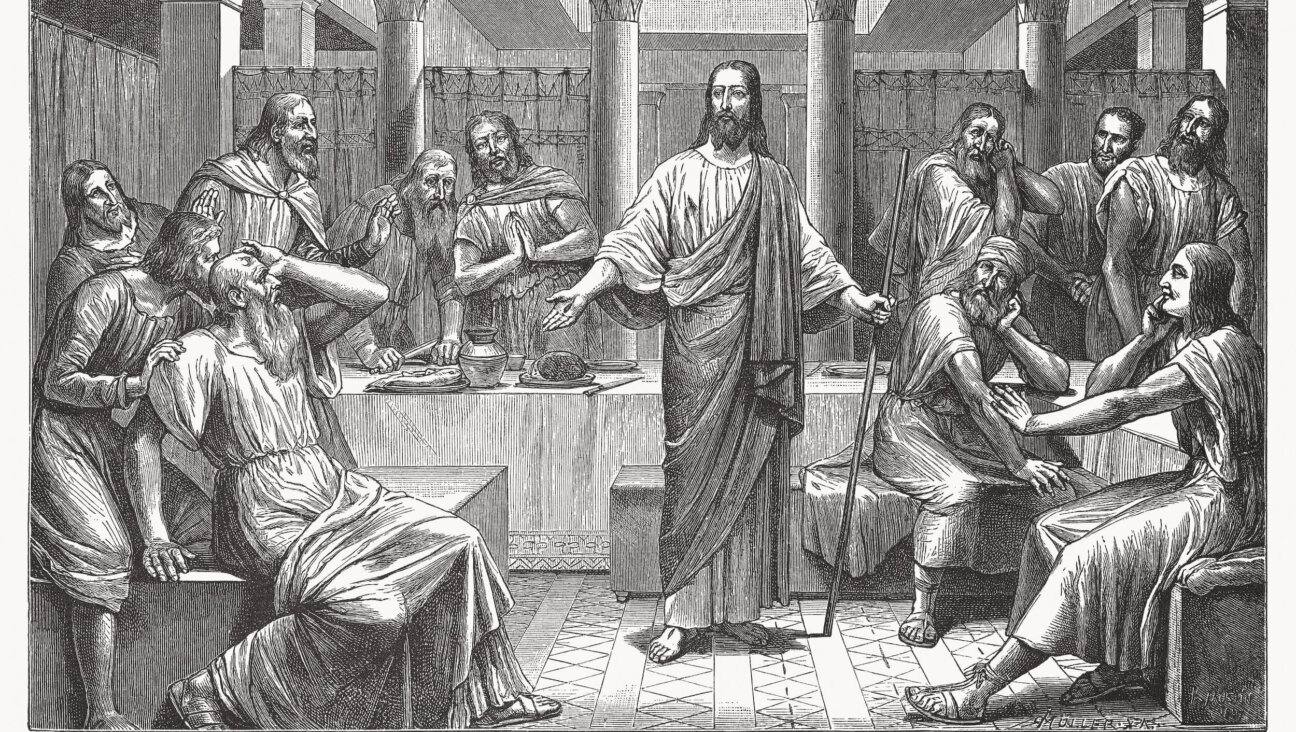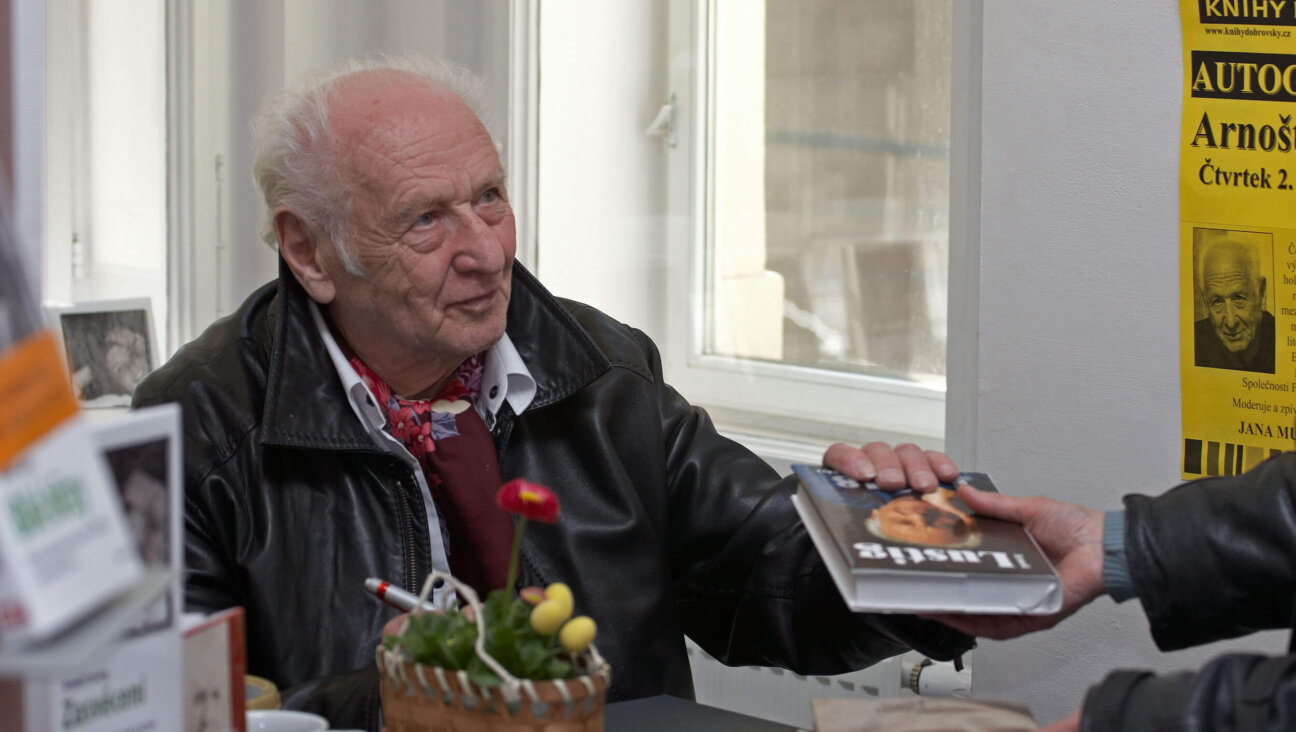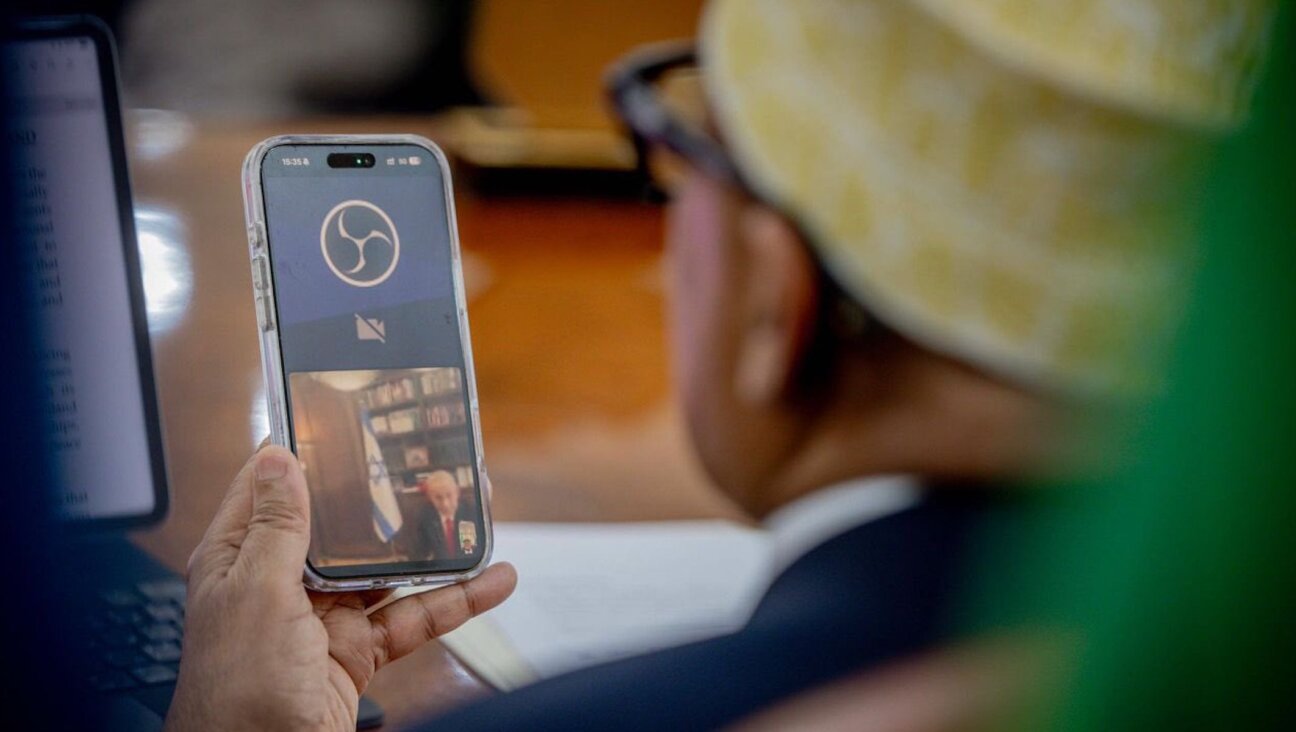Harlem’s queen of Ethiopian Jewish cuisine knows that the histories of Jews and Africans are inseparable
At Tsion Cafe, Beejhy Barhany tells her community’s story through food
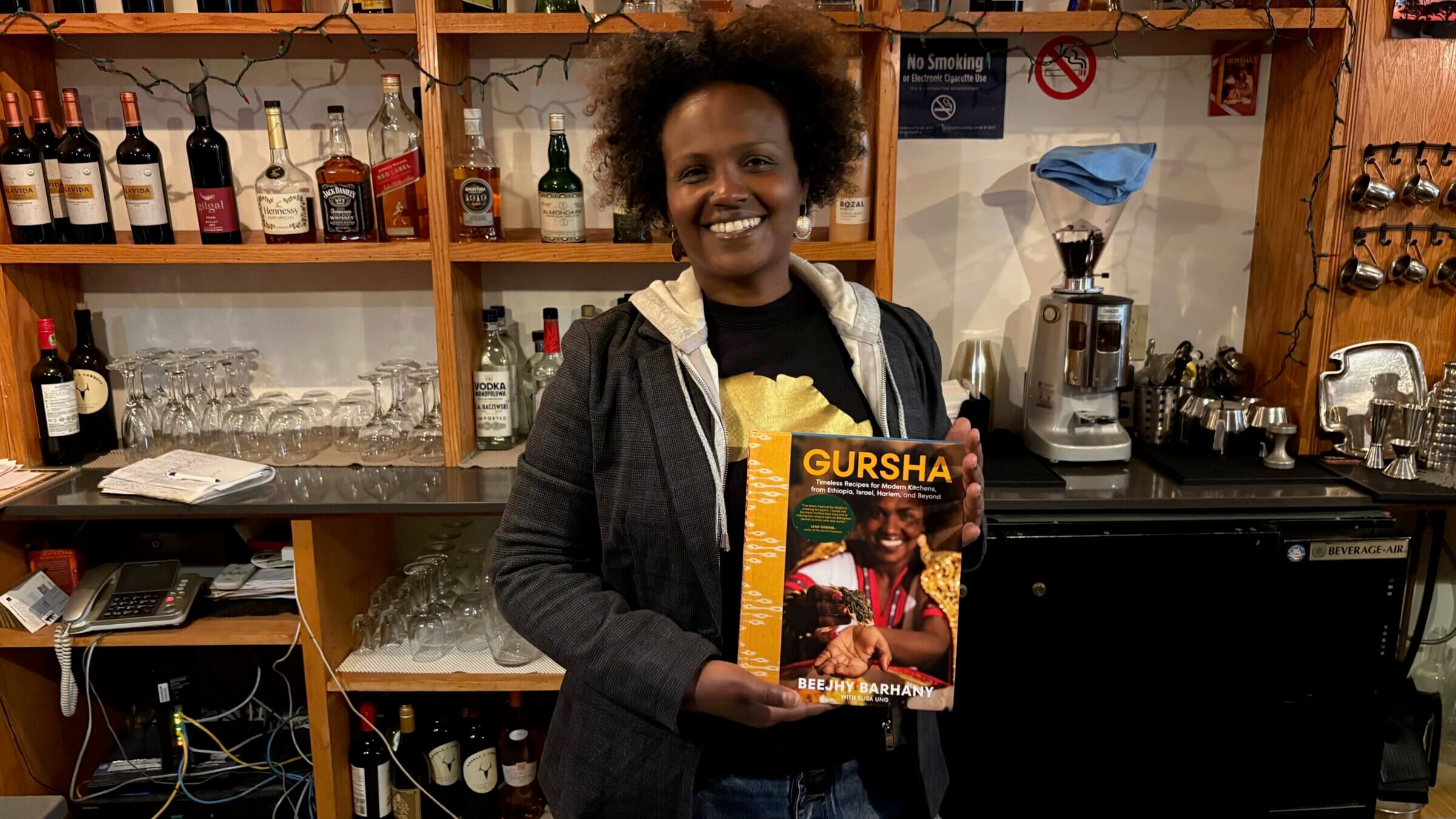
“Gursha,” the title of Barhany’s book, refers to feeding another diner from one’s own hand. Photo by Sam Lin-Sommer
In New York City, where apartments are crowded side-by-side and top-to-bottom like so many Jenga blocks, histories often overlap. I’m standing in front of a stately brownstone in Harlem that used to house Jimmy’s Chicken Shack, an eatery and jazz joint where Art Tatum used to play, and where Charlie Parker, Malcolm X, and Redd Foxx all worked in the 1940s.
Today, that very same space is home to Tsion Cafe, the only restaurant in New York City serving Ethiopian Jewish food. I have an appointment to cook with the restaurant’s owner, Beejhy Barhany. Her work as a chef, writer, and organizer has taught Americans that the stories of Africans and Jews have done more than coincide over time. They’re inseparable.
I knock on the door of the garden unit, and Barhany answers the door. She wears a dark gingham hoodie over a black T-shirt with a golden decal of Africa. The restaurant is narrow and deep, its dimly lit walls painted orange and lined with colorful art. Barhany smiles and holds out her hand. “Beejhy,” she says, pronouncing her name like the letters “b” and j.”
Barhany grew up in Ethiopia in the Beta Israel community, a group of Jews that has lived there since ancient times, and numbers around 168,000 in Israel and 2,500 in the United States. In 1980, when Barhany was a child, she and her family left for Sudan on foot in the middle of the night, fleeing political violence. Two years later, they were smuggled into Israel, where Barhany spent much of her childhood.
In 1996, after serving in the Israel Defense Forces, Barhany traveled around the Americas and fell in love with New York City. She moved to New York in 1999, and to Harlem in 2000.
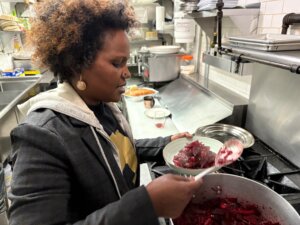
Barhany quickly became a cultural ambassador. In 2003, she established the Beta Israel of North America Cultural Foundation, which celebrates Ethiopian Jewish culture through cooking classes, Shabbat dinners and film screenings at places like the Schomburg Center for Research in Black Culture and the 92nd Street Y.
And in 2012, Barhany opened Tsion Cafe to tell her community’s story through food. The restaurant features a menu rooted in Beta Israel cooking, but with influences from Barhany’s many homes and travels. Visitors can start a meal with plantain chips; eat spiced lentils for a main course; and finish with Yemenite malawach bread with date syrup.
This spring, Barhany published her first cookbook, Gursha: Timeless Recipes for Modern Kitchens, from Ethiopia, Israel, Harlem, and Beyond, with Elisa Ung. Like her restaurant, the book spans Ethiopian classics, like yellow split pea stew, and dishes rooted in other cuisines, like Ethiopian-and-Yemenite spiced schnitzel.
The book is full of the stories of Beta Israel who have crossed continents and overcome hardships with the help of community and food. After Barhany’s aunt Avejo Aklum completed a harrowing journey to Israel, she struggled to find spices, teff flour for injera, or green coffee beans for the Ethiopian coffee ceremony, a three-times-a-day tradition that involves roasting, grinding, and brewing raw beans by hand. So she founded a business that sources Ethiopian cooking ingredients. Barhany’s recipe for dabo, a rich Shabbat bread, is adapted from Aklum’s.
In Amharic, Ethiopia’s lingua franca, and Tigrinya, Barhany’s mother tongue, “gursha” refers to feeding another diner from one’s own hand, an act of generosity and respect at the Ethiopian table.
Barhany was generous indeed in humoring my request to cook with her during our interview. As we sat down at one of the restaurant’s tables, Ethiopian jazz by Brooklyn-based Anbessa Orchestra played through the speakers. Barhany laughed as she asked, “So, how should we do this thing?”
The following interview has been edited for brevity and clarity.
How did you learn to cook?
I was brought up in an environment of feeding one another — serving, cooking.
Hospitality is something given within our culture. Everything is communal. As a kid, you see your mom, your aunties, grandmas preparing food without even knowing that someone would come in. But somebody would come in nonetheless.
Can you tell me how you fell in love with Harlem?
I lived for about six to eight months downtown, on 20th Street. In a very different environment. When I first came, people said, “Harlem is dangerous; do not go there!”
And I said to myself [laughs], “As a Black woman, what can happen to me from being around Black people, you know?”
Growing up in Israel, you see a lot of movies about Harlem. I was fixated. It’s the hub for Black culture. A lot of great leaders, musicians even — you know, the Harlem Renaissance itself.
But hearing all about that, I wanted to see, and not let people deter me from being part of this interesting culture. And I loved it, and I moved in.
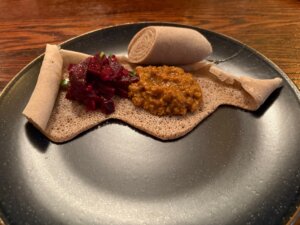
How do you use the restaurant as a space for teaching?
We bring a different culture while honoring the history of the place itself. During and after the Harlem Renaissance, this used to be Jimmy’s Chicken Shack. It was a speakeasy where Black and white people would congregate at 1 a.m., for soul food and to listen to good music like Billie Holiday or Hazel Scott.
This is where young Malcolm X worked as a waiter. This is where he met Redd Foxx, the comedian, from Sanford and Son, who worked as a dishwasher. This is where Charlie Parker would be listening to the jazz pianist Art Tatum.
We could not ignore that history. We created this art wall. And we have a Redd Foxx drink and an X drink to honor those people. We host live music. A couple of books about Malcolm X were completed in this venue.
Do you end up talking about Ethiopian Jewish culture with customers?
People ask a lot of questions. Some elderly Jewish customers want to know, “Are you really Jewish?”
I’m like, “What? Are you serious? So you think you’re the only Jew in the world?”
What can you do? I’m like, “Yeah, I guess I am Jewish!” [laughs]
You know, Ethiopian Jews, we thought that we were the only Jews in the world! We never thought there were white Jews, you know?
But when you are exposed to other people, when you travel, you see the diversity, the mosaic of Jewish peoplehood. We have to be more open and engaged with things we don’t know and not take it for granted that we’re the only group that exists.
In Ethiopia, what was the relationship like between the Jewish community and your non-Jewish neighbors?
It was an ideal way of living. We had our Muslim neighbors and Christian neighbors. We had our Jewish community, synagogues, and all of that. We practiced our Judaism freely; there was no persecution. If there was a special celebration, my community would invite Muslims, Jews and Christians, and they each would provide special food according to our dietary laws. And vice versa.
Ethiopia is the land where all the three religions kind of flourished and evolved. If you read the cookbook, I write about how the Midrash Rabbah says that Moses was a king in Ethiopia for over 40 years. Christianity came only in the fourth century. There was maybe some paganism or other faiths, but the Hebrew religion was the base of Ethiopia. Nowadays, people in the Orthodox Ethiopian Church don’t eat pork. Shabbat is their holy day. And circumcision happens on the eighth day.
“A lot of people ask me, ‘Why would you give all your recipes to people?’ I say, ‘I have no problem sharing.’”Beejhy Barhany
Are there any things that you think differentiate the culinary traditions of contemporary Ethiopian Jews from other Ethiopians?
Oh, sure. For example, kashrut, the dietary law.
Ethiopians as a whole use butter to cook their beef, chicken, and all of that stuff. But Ethiopian Jews would not cook meat, like beef, with butter.
Can you tell me more about how Ethiopian Jews have adapted their food as they’ve migrated?
During the first, I would say, 20 years of immigration of Ethiopian Jews to Israel, they had to be very resourceful. There was no teff. Nobody knew what it was, and nobody imported it into Israel. Ethiopians had to utilize whatever was at their disposal.
So they used corn, wheat, sorghum and millet to make injera. The wheat injera actually led to health issues, because it’s bleached flour. You’re not accustomed to eating this kind of stuff. And Ethiopians all of a sudden developed these diseases, like diabetes and hypertension, from processed food. Until finally people started importing teff and got back to the nutrients and diets that they were accustomed to.
I could keep asking you questions, but you said you said you had some beets that we could cook?
Yeah! [laughs]
Barhany leads me to the kitchen, where she hands me a hibiscus drink with ginger, orange, apples and cinnamon, inspired by trips to Dominica, her husband’s birthplace. It’s tart, sweet and deeply spiced. She places a few onions on a cutting board, and I slice them into thin rings.
Would you like to see Ethiopian dishes become mainstream Jewish food?
They should be. That’s my intention. I encourage people to bring some collard greens or lentils, yellow split peas or dabo to their Shabbat dinner. I hope with Gursha, eventually every household will want to be celebrating the vast Jewish diaspora.
I don’t think I’ve had dabo.
You didn’t? Funny enough, I had a book signing yesterday. I always make extras. So, you are in for a treat.
Wow, thank you. Dabo isn’t typically on restaurant menus, right?
No, it’s not. It’s a celebratory bread. It’s like having challah in a Jewish restaurant. We keep it for special occasions.
We heat the onions with oil in a large, stainless steel pot. I dump in two large plastic containers of slivered beets.
While the vegetables are cooking, Barhany cuts two palm-sized cubes of spongey dabo out of a sheet pan. I take a bite.
Barhany compares the bread’s texture to focaccia, and I agree. But Barhany’s dabo is sweet and laced with nigella seeds, cardamom and fenugreek.
After a short wait, Barhany pulls the lid off of the pot and adds salt, pepper, cumin and a paste of ginger and garlic. She asks me if I want coffee.
No, thank you. If you do the Ethiopian coffee ceremony at night, do people end up staying up late?
I’ll tell you, I can drink a shot of espresso at 8, 9 at night and I’m going to just sleep. The coffee ceremony, within Ethiopia, is done three times a day. People love to drink coffee. You have it enough, it doesn’t keep you up.
Within my Ethiopian tradition, at the end of Shabbat, for Havdalah, we roast coffee right away. A lot of Jews burn frankincense and herbs; we do the coffee ceremony. Ethiopia is the birthplace of coffee, and of mankind.
Beejhay removes the lid from the pot of beets, and we taste them again: tender and sweet. We head back to the dining room to eat them, along with some chopped jalapeño, injera and a dollop of spiced red lentils.
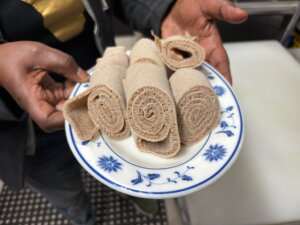
In the book, you talk about connections between Yemen and Ethiopia. Could you tell me more about that?
There are a lot of similarities in the food. For example, they do the flatbread lachuch, which is in the book, and is similar to injera. And they make malawach, which is also similar.
Between Yemen and Ethiopia is just a Red Sea crossing. At some point throughout history it was under one kingdom. So there is this exchange of influences and culinary traditions.
Not only that, but also, the Yemenite community was the first to welcome the Ethiopian immigrants to Israel, and they helped in terms of ingredients and cooking. They were both considered dark, or Black, so there was a connection there, too.
In Gursha, it seems like you were being very generous with your recipes. The book seems like an encyclopedia.
What, should I hold on to them? It’s funny you bring that up. A lot of people ask me, “Why would you give all your recipes to people?” I say, “I have no problem sharing.”
At the end of the day, we’re not going to be here forever. And I want to share. I have no fear of people stealing my recipes. Enjoy, and we all, I think, can benefit from these.
And what’s important for me really is to bring to light the unique flavors, bread and spices of Ethiopia. That’s my mission. I have nothing to hold on to. I just want to share it: love, laughter, food, happiness.

